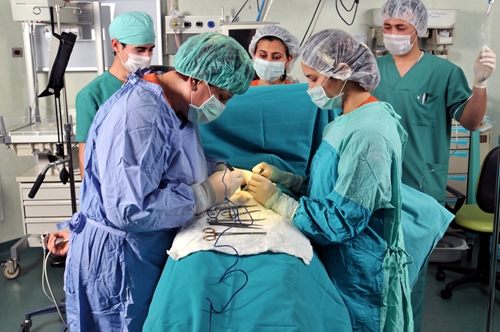Targeted anesthesia shortens stays after hip fracture surgery
As the human body ages, it steadily loses bone density. Millions of Americans have osteoporosis, or weak bones, and the condition led to more than 258,000 hip fractures in 2010, according to the U.S. Centers for Disease Control and Prevention. By 2030, the number of hip fractures is expected to grow to 289,000 per year. The patients admitted to hospitals for surgery and treatment cost Medicare more than $2.9 billion annually.
As hip fractures grow more common, a recent study conducted by researchers at the Perelman School of Medicine at the University of Pennsylvania and published in the journal JAMA Internal Medicine found that treating hip fracture patients with localized and targeted anesthesia during surgery reduces the length of admission.
Examining the data
Paul Neuman, M.D., M.Sc., assistant professor of anesthesiology and critical care and lead author of the study, reviewed the health data of 56,729 patients who underwent surgery for a hip fracture at general acute care hospitals throughout New York between July 2004 and December 2011. All patients were 50 years or older.
Of the original sample, 28 percent of patients received regional anesthesia as part of their surgeries, while 72 percent received general anesthesia. A major factor for anesthesia administration methods was the distance patients lived from eligible medical facilities and the method of anesthesiology used by these hospitals.
In conclusion, the study found that the method of anesthesia administration did not significantly impact surgery outcomes, but regional anesthesia resulted in hospital stays that were 0.6 days shorter than that of the general anesthesia group.
"Residents of long-term care facilities represent a highly vulnerable population," Neuman said in a statement. "Prevention of hip fracture should be paramount, but clinical care, should a fracture occur, should consider the high probability of death and functional disability among these patients postfracture."
The study also explained how hip fracture patients who were not operated on experienced significantly worse outcomes across the board – 12 percent of patients received nonoperative management for their injuries, which was related to higher rates of death and dependence on orthotic devices or equipment.
"Our findings of substantially worse outcomes with non-operative management suggest that surgical treatment may still be a reasonable option if it is consistent with the patient's long-term goals of care," Neuman said.



